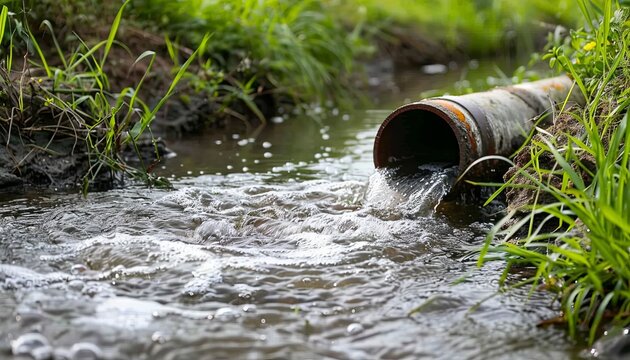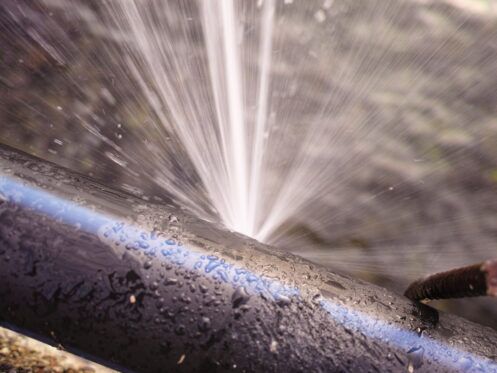Burst Pipe Repair: Professional Solutions to Minimize Damage and Costs
Burst Pipe Repair: Professional Solutions to Minimize Damage and Costs
Blog Article
Preventing Burst Water Lines: Crucial Tips to Secure Your Plumbing
Protecting against burst pipelines is a vital problem for property owners, particularly throughout chillier months when the threat of cold is increased. Applying calculated steps such as appropriate insulation, routine inspections, and maintaining constant indoor temperature levels can substantially lower the chance of pipeline failure.
Understand Pipe Vulnerabilities
Understanding pipe vulnerabilities is crucial for reliable plumbing maintenance and avoiding expensive damage. Numerous elements contribute to the sensitivity of pipelines to ruptureds, consisting of material structure, age, and ecological conditions. Older pipes, especially those made from galvanized steel or polybutylene, commonly break down with time, resulting in boosted risk of tears and leaks.
Temperature fluctuations can also significantly influence pipe integrity. In cooler climates, water trapped in pipes can ice up, putting in and expanding stress on the pipeline wall surfaces, which might eventually bring about a burst. Furthermore, high water stress can strain pipes, especially at joints and bends, enhancing the likelihood of failing.

Insulate Water Lines Appropriately
Proper insulation of pipes is essential for preventing cold and subsequent bursts during winter (burst pipe). Shielding your pipes system efficiently safeguards against temperature level drops that can result in pricey damage. Begin by determining susceptible locations where pipelines are exposed to exterior temperature levels, such as basements, attic rooms, and outside walls
Usage foam pipe insulation sleeves or cover insulation tape around these locations to provide a safety obstacle. Guarantee that all sections of the pipes, specifically those with minimal warmth direct exposure, receive appropriate insulation. Pay unique attention to fittings and joints, as these are extra prone to freezing.
When protecting, it's vital to select materials that fulfill regional building regulations and are ideal for the particular setting. Fiberglass insulation is typically advised for its thermal resistance properties. Furthermore, consider making use of warm cables or tape in extreme problems, which can be connected in to give extra warmth
Routinely evaluate protected pipelines for any indicators of wear or damage, as endangered insulation can diminish its efficiency. By taking these proactive steps, you considerably minimize the danger of pipe ruptureds, guaranteeing a trusted plumbing system throughout the winter season.
Maintain Regular Temperature
A secure indoor temperature is important for stopping burst pipelines throughout the frigid months. When temperatures decline, water within pipelines can freeze, broadening and developing stress that may eventually cause the pipes to burst. To reduce this risk, homeowners should keep a consistent temperature level throughout their space, preferably no lower than 55 ° F(13 ° C)Making use of a programmable thermostat can aid manage interior temperatures properly, guaranteeing that spaces with plumbing stay warm also when your home is vacant. Pay special attention to locations that are more at risk to cool, such as cellars, garages, and attics. Maintaining cupboard doors open under sinks can additionally permit warmer air from the home to distribute around plumbing.
Furthermore, it is sensible to more enable faucets to drip somewhat during severe cold spells. This small circulation of water can avoid cold by reducing pressure within the pipes. Moreover, throughout specifically severe weather events, think about momentarily suspending any nighttime setbacks on your thermostat to maintain a stable cozy atmosphere. By applying these techniques, house owners can significantly minimize the danger of more tips here pipe bursts and safeguard their plumbing systems against the rough wintertime elements.
Frequently Inspect Plumbing
Routine inspections of pipes systems are crucial for avoiding ruptured pipes and keeping general home honesty. During these assessments, it is necessary to examine noticeable pipelines for signs of corrosion, leakages, or wear.
Furthermore, evaluating joints and links is essential, as these points are commonly at risk to leaks. Homeowners need to likewise examine water stress degrees, as too much pressure can strain the pipes system and boost the danger of pipeline bursts.
Take into consideration scheduling expert pipes assessments at the very least as soon as a year, especially prior to winter, to ensure your system is prepared for colder temperatures. By being proactive in your method, you can protect your home against the pricey and disruptive repercussions of burst pipelines.
Know Emergency Situation Procedures
Comprehending emergency situation treatments is important for every property owner, especially after performing routine plumbing evaluations. Being prepared for a plumbing emergency can significantly mitigate damages and save costs.
Following, maintain necessary click to read more devices handy. A plumbing emergency kit ought to consist of a wrench, plunger, and towels, as well as a flashlight and a container for tiny leakages. In addition, consider having the call details for a trusted plumber conveniently offered, needs to the scenario intensify past your control.
If you detect a leakage or ruptured pipe, quickly transform off the water system and alert your plumbing technician. Additionally, record the damage with pictures for insurance policy purposes. burst pipe. Be aware of the indications of potential plumbing concerns, such as unusual water pressure changes or damp areas on walls
Ultimately, positive knowledge and swift activity are crucial in taking care of plumbing emergencies, ensuring your home stays protected and minimizing potential damages.

Conclusion
In verdict, stopping ruptured pipelines demands a complex strategy that includes understanding pipe susceptabilities, appropriate insulation, preserving constant interior temperatures, routine inspections, and knowledge of emergency situation procedures. By carrying out these essential approaches, the danger of pipes failings can be significantly reduced, consequently ensuring the long life and effectiveness of the plumbing system. Proactive steps not only protect versus possible damages but likewise add to overall water preservation and the protection of building.
In colder climates, water trapped in pipelines can freeze, expanding and exerting stress on the pipe wall surfaces, which might ultimately lead to a ruptured. When temperatures drop, water within pipes can freeze, increasing and producing stress that might ultimately trigger the pipes to ruptured. By executing these approaches, property owners can significantly lower the risk of pipe ruptureds and secure their pipes systems versus the harsh wintertime components.

Report this page